Learning Māori Through Reading
I've been reading about language learning via the natural approach, and decided to try writing some simple examples to help learn basic concepts.

I've been reading about language learning via the natural approach, and decided to try writing some simple examples to help learn basic concepts.
The idea behind the natural approach is to have simple content that is entirely in the target language, but at a level that is just above the level of the reader. Grammar is not explicitly explained, but rather demonstrated through immersion in the content. My first attempt is below, comments welcome.
The images in this post were created with the assistance of AI, interacting with DALL-E 2 to iterate towards a suitable image.
ko ngā manu me te kiore
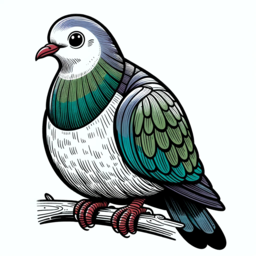
Kaiako: He manu te kererū. He aha te kererū?
Tauira: He manu.
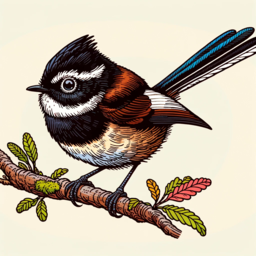
Kaiako: He manu te tīrairaka?
Tauira: Āe, he manu.
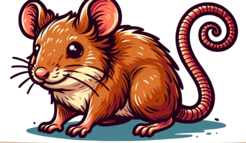
Kaiako: He manu te kererū me te tīrairaka. He aha te kiore?
Tauira: He kararehe.
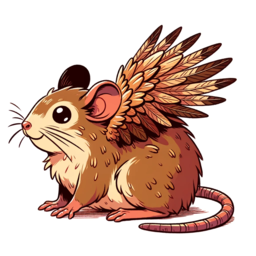
Kaiako: He manu te kiore?
Tauira: Kāo, he kararehe te kiore.
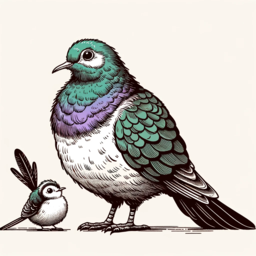
Kaiako: He manu nui te kererū. He manu nui te tīrairaka?
Tauira: Kāo, he manu iti.
Kaiako: He nui ake te kēreru i te tīrairaka?
Tauira: Aē, he nui ake.
Kaiako: He nui ake te tīrairaka i te kererū?
Tauira: Kāo, he iti ake te tīrairaka i te kererū.
Commentary
The reading exercise starts with how to describe what something is. In this case, a kererū, a tīrairaka and a kiore. The grammar for the structure breaks down this way:
| Māori | English |
|---|---|
| he <what it is> <object> | The <object> is a <what it is> |
| he manu te kērerū | The kererū is a bird. |
To ask the question, "what is X", we use the question word "aha":
| Māori | English |
|---|---|
| he aha <object>? | The <object> is a what? |
| he aha te kērerū? | What is the kererū? |
The answer repeats the question, replacing "aha" with the response:
| Māori | English |
|---|---|
| he aha te kererū? | What is the kererū? |
| he manu te kererū | The kererū is a bird |
To list more than one item in the "<object>" part of the statement, we use "me" for the equivalent of "and" in English:
| Māori | English |
|---|---|
| he manu te kererū me te tīrairaka | The kererū and the tīrairaka are birds |
We can add a describing word to the "<what it is>" portion of the statement to further describe it. This appears after the "<what it is>":
| Māori | English |
|---|---|
| he manu nui te kererū | The kererū is a big bird |
| he manu iti te tīrairaka | The tīrairaka is a small bird |
We can compare an object to see if it is more or less of a particular aspect compared to another object. To say something is more of a particular aspect:
| Māori | English |
|---|---|
| he <aspect> ake <object1> i <object2> | <object1> is greater than <object2> in <aspect> |
| he nui ake te kēreru i te tīrairaka | The kererū is bigger than the tīrairaka |
| he iti ake te tīrairaka i te kēreru | The tīrairaka is smaller than the kererū |
To say something is less of a particular aspect:
| Māori | English |
|---|---|
| he <aspect> iho <object1> i <object2> | <object1> is lesser than <object2> in <aspect> |
| he nui iho te kēreru i te tīrairaka | The kererū is not as big as the tīrairaka |
| he iti iho te tīrairaka i te kēreru | The tīrairaka is not as small as the kererū |
